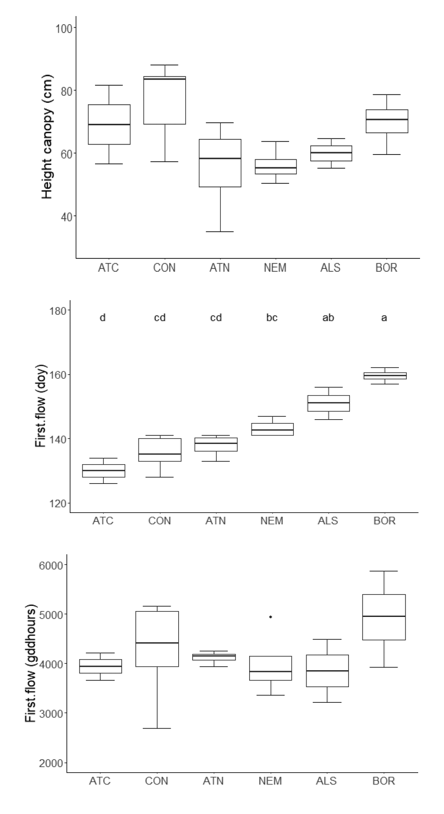Lutz Eckstein is the senior author of a multi-author paper on the phenology and morphology of the invasive legume Lupinus polyphyllus along a latitudinal gradient in Europe. He has also been the project coordinator, while Kristin Ludewig (Hamburg University) has led the preparation of the paper, recently published in the journal NeoBiota (https://doi.org/10.3897/neobiota.78.89673). In total, 30 authors (researchers, students, consultants, conservation agency employees) have been involved in this project and the publication. Each co-author contributed data of a lupine population and the whole project covered a >2000 km long latitudinal gradient including the countries Luxembourg, Germany, Poland, Denmark, Sweden and Norway (Fig. 1).

Plant phenology is the timing of seasonal events, such as budburst, greening, flowering, and fruit ripening. Phenology influences the fitness of individual plants, controls species distribution ranges, and may have cascading effects on communities and ecosystems. Temperature is one of the most important drivers of plant phenology together with day length. However, the potential for adaptation of phenology may also be key to understanding the success of invasive plant species, which will benefit from ongoing global change. Lupinus polyphyllus Lindl. (Fabaceae) is a perennial herbaceous hemicryptophyte originating from western North America that was introduced in Central Europe as an ornamental plant in the 19th century. From Central Europe and Scandinavia, the species spread very successfully to almost all parts of Europe, now ranging from the Pyrenees in the West to the Ural (and beyond) in the East (Eckstein et al., unpublished data). From North to South, L. polyphyllus is currently covering the full range of Europe, except for Mediterranean zones such as the Iberian Peninsula and Italy.
The overall aim of the paper was to understand how the timing, temperature dependence of flowering and fruiting, and performance (canopy height, potential seed production and seed release height) of L. polyphyllus change along the latitudinal gradient from Central to Northern Europe. The authors tested differences between populations from different climatic zones and quantified variation in phenology in relation to latitude. The present study is probably the first attempt to quantify variation in phenology of an invasive plant across a large latitudinal gradient in the field.
The paper studied variation in growth and phenology of flowering and fruiting of L. polyphyllus using measurements and >1600 digital photos of inflorescences from 220 individual plants observed weekly at 22 sites. While canopy height of plants did not vary significantly along the latitudinal gradient, the day of the year (doy) at which different phenological phases were reached, increased 1.3–1.8 days per degree latitude (Fig. 2), whereas the growing degree days (gdd) required for these phenological phases decreased 5–16 gdd per degree latitude. However, this difference disappeared, when the day length of each day included in the calculation of gdd was accounted for (Fig. 2). The day of the year of the earliest and the latest climatic zone to reach any of the four studied phenological phases differed by 23–30 days and temperature requirements to reach these stages differed between 62 and 236 gdd. Probably, the invasion of this species will further increase in the northern part of Europe over the next decades due to climate warming. For invasive species control, the results suggest that in countries with a large latitudinal extent, the mowing date should shift by ca. one week per 500 km at sites with similar elevations to target the species in the same phenological phase.



